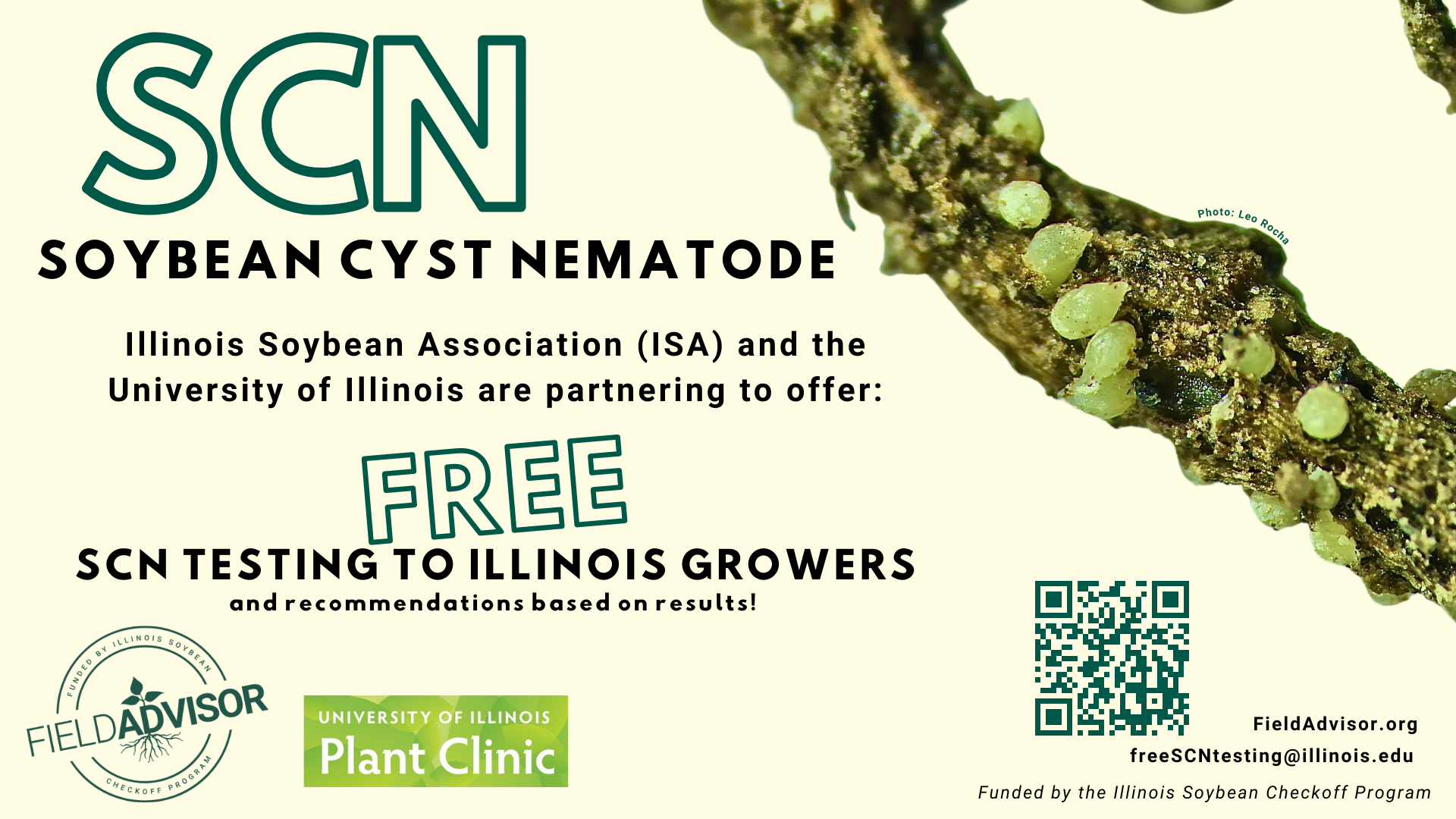The Illinois Soybean Association (ISA) Checkoff program is committed to supporting soybean cyst nematode (SCN) sampling and is pleased to announce the continuation of this initiative for a second year. To help monitor and research this significant threat, ISA is offering free SCN sampling of egg counts to all soybean farmers in Illinois. In partnership with the University of Illinois, their goal is to establish a baseline SCN population throughout soybean fields across the state.
According to the Soybean Research and Information Network, the following are key points to know about SCN:
- Many farmers don’t know their fields are infested with SCN – you often can’t tell SCN is present from looking at the field.
- The effect of SCN on soybean yield is directly related to the numbers of nematodes feeding on the root system.
- Seeing adult females on the roots of soybean plants is the quickest and most accurate way to diagnose SCN infestation in the field.
- Once present in the soil, SCN is nearly impossible to eliminate. However, the nematode can be managed to minimize SCN reproduction and maximize crop yields.
- Growing non-host crops in rotation with SCN-resistant soybean varieties is the cornerstone for management of SCN. Non-host crops, such as corn, sorghum, sunflower, and alfalfa can reduce SCN population densities each year they are grown.
- Anything that moves even small amounts of infested soil is capable of spreading SCN, including farm machinery, vehicles and tools, wind, water, animals, and farm workers.
Even if you’ve tested for SCN before, it’s crucial to be aware that populations may be increasing. SCN has demonstrated an ability to adapt to the genetic resistance source (PI 88788) that farmers have relied on for over 30 years. This adaptation underscores the importance of gathering comprehensive data from all corners of Illinois to identify areas of infestation and assess the impact on soybean crops.
The ISA Checkoff program is also funding research focused on SCN in fiscal year 2025, addressing the following key questions:
- How can genetic engineering be used to help manage SCN populations? (Dr. Matthew Hudson, University of Illinois Urbana-Champaign)
- What new types of varietal resistance to SCN are being developed? (Dr. Eliana Monteverde, University of Illinois Urbana-Champaign)
- Which cover crops can help suppress populations of SCN? (Dr. Jason Bond, Southern Illinois University)
- How does infection timing and soybean cyst nematode impact infestation of RCR in soybean fields, and what options do I have for control? (Dr. Boris X. Camiletti, University of Illinois Urbana-Champaign)
To participate in this vital effort, download the PDF below to access the free SCN sampling form. You can also reach out to freeSCNtesting@illinois.edu to request a free SCN kit, which includes detailed instructions and a prepaid shipping label for easy submission.
Please allow a few weeks for the University of Illinois Plant Clinic to analyze your soil sample and provide an accurate summary of the results. Join us in this important initiative to protect soybean yields and contribute to the advancement of soybean farming in Illinois.



 and then
and then